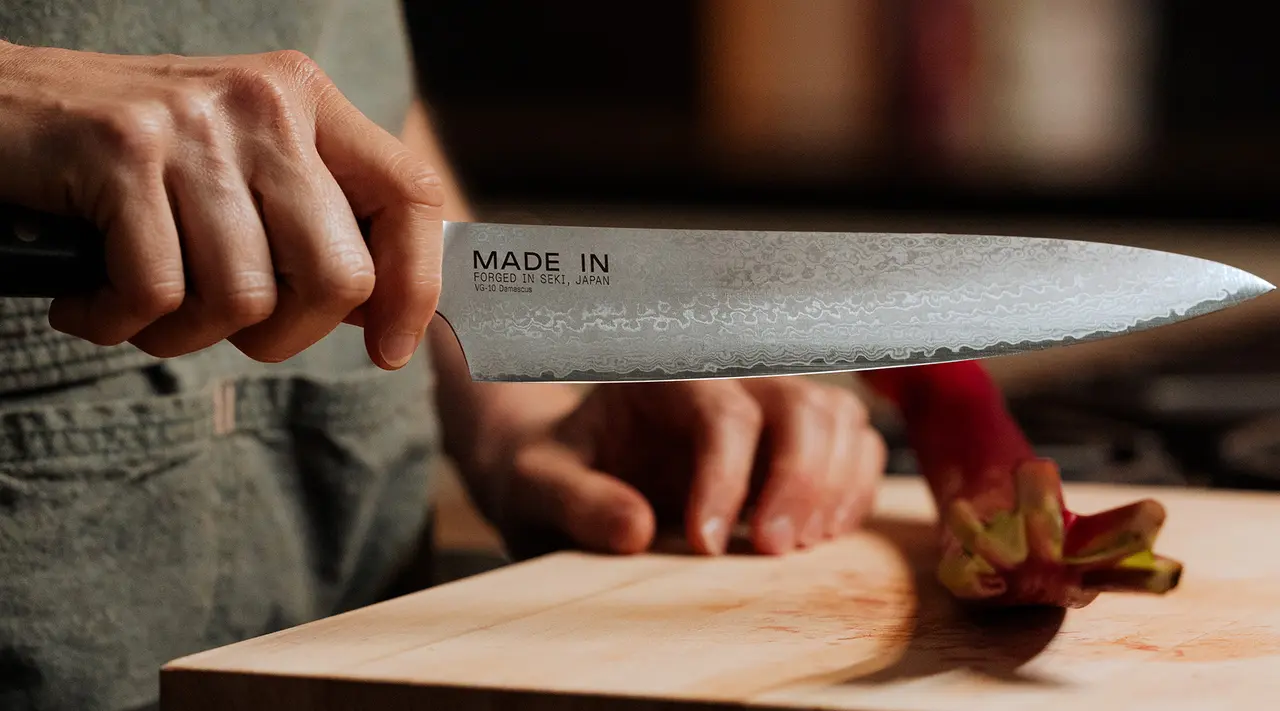The culinary world is no stranger to the ongoing debate surrounding the merits of German vs American knives. Each type has its loyal supporters, showcasing distinct advantages and drawbacks that can greatly influence a chef's culinary experience. For professionals in the kitchen, grasping the subtle differences between these two knife styles can enhance their cooking skills. Let's explore the fascinating world of these essential kitchen tools and uncover what sets them apart.

The Heritage and Craftsmanship
German Knives: A Legacy of Precision
German knives are celebrated for their exceptional craftsmanship and longevity. Hailing from Solingen, Germanythe knife-making epicenterthese tools are typically crafted from high-carbon stainless steel, ensuring a durable and sharp edge. The legacy of Solingen exemplifies the precision and quality associated with German knives. Often heavier than their counterparts, they feature a full tang and bolster that enhance their balance and stability.
American Knives: Innovation Meets Tradition
Conversely, American knives showcase a spirit of innovation and versatility. While they may not boast the centuries-old legacy of German knives, American artisans excel in integrating modern materials and techniques. Many American knife manufacturers combine stainless steel with various alloys to produce lighter, more nimble knives. This adaptability makes them well-suited for diverse cutting styles, catering to a wide range of culinary tasks.
Design and Ergonomics
The Weight and Balance
A notable distinction between German and American knives is their weight and balance. German knives are generally heftier, making them ideal for tasks requiring force, such as cutting through bones. Their weight creates a natural momentum, allowing for reduced physical effort during use.
In contrast, American knives are typically lighter, which makes them more appropriate for precise, delicate tasks that demand speed and accuracy. Their ergonomic designs often include comfortable grips to minimize hand fatigue, a vital feature for chefs who spend hours in the kitchen.
The Blade Edge
The blade profile also plays a crucial role in differentiation. German knives usually possess a more curved blade, perfect for the rocking motion commonly used in chopping and slicing, thus aligning well with classic European cooking methods.
On the other hand, American knives frequently feature a straighter edge, making them excellent choices for push-cutting techniques prevalent in modern culinary practices. This variation in blade design mirrors the diverse culinary influences found across the United States.
Maintenance and Durability
Caring for Your Blades
Regarding upkeep, German knives necessitate regular honing to preserve their sharpened edge due to the softer steel used. That said, they tend to be more resistant to chipping and bending, which is a distinct advantage in bustling kitchen settings.
In contrast, American knives, constructed from harder steel blends, tend to maintain their sharpness for longer but can be more susceptible to chipping if not handled correctly. Proper care, which includes regular sharpening and secure storage, is vital for extending their lifespan.
Longevity in the Kitchen
Both German and American knives are engineered for durability, but their lifespan largely depends on how they are treated. German knives, known for their sturdy build, can endure rough usage, making them excellent for high-traffic kitchens.
Meanwhile, although American knives are robust, they may require extra attention to prevent damage. Their innovative designs often come with specific maintenance guidelines that users need to follow.
Conclusion: The Right Knife for You
Ultimately, choosing between German vs American knives hinges on individual preference and cooking style. German knives offer a tried-and-true combination of tradition and strength, ideal for chefs who appreciate a heavier, more secure tool. In contrast, American knives shine with their focus on innovation and adaptability, making them a great match for those who favor a lighter, more responsive cutting instrument.
For professionals in the kitchen, blending both options in their arsenal can be beneficial, leveraging the advantages each brings to the culinary table. Whether you gravitate toward the time-honored craftsmanship of German knives or the cutting-edge (pun intended) designs of American knives, both can enhance your cooking experience. For additional insights on knife care, you may find these care tips and the engaging article on how chef knives are made useful.

FAQs
What are the main differences between German vs American knives?
German knives are characterized by their heft and durability, often featuring a curved blade thats ideal for rocking cuts. American knives, conversely, tend to be lighter and have a straight edge for sharp, precise cutting.
Which is better for professional chefs?
This largely depends on the chef's personal preferences and cooking techniques. German knives excel in heavy-duty tasks, while American knives provide versatility and speed.
How should I maintain my German and American knives?
Regular honing and sharpening are crucial for both types. German knives require more frequent honing, while American knives should be handled with care to avoid chipping.


























